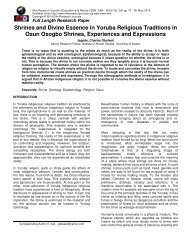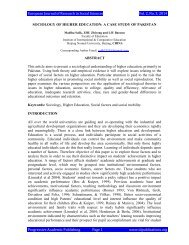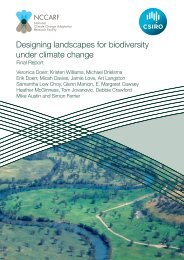Williams-Climate-change-refugia-for-terrestrial-biodiversity_0
Williams-Climate-change-refugia-for-terrestrial-biodiversity_0
Williams-Climate-change-refugia-for-terrestrial-biodiversity_0
You also want an ePaper? Increase the reach of your titles
YUMPU automatically turns print PDFs into web optimized ePapers that Google loves.
EXECUTIVE SUMMARY<br />
<strong>Climate</strong> <strong>change</strong> is already underway, and we are currently looking down the barrel of a<br />
four to five degree Celsius increase in global mean temperatures by the end of the<br />
century. This level of climate <strong>change</strong> will have manifold impacts on human livelihoods<br />
and infrastructure, and will also have serious consequences <strong>for</strong> the world’s <strong>biodiversity</strong>.<br />
How can we best conserve <strong>biodiversity</strong> in the face of this global, ubiquitous driver of<br />
<strong>biodiversity</strong> loss?<br />
The most cost-effective solution <strong>for</strong> <strong>biodiversity</strong> conservation under climate <strong>change</strong> is<br />
to identify and protect those places in the landscape that will harbour many species<br />
from the worst impacts of climate <strong>change</strong>. The effect of climate <strong>change</strong> is not felt<br />
equally in all places because local weather systems and landscape features can act to<br />
amplify or dampen global patterns. If we can identify parts of the landscape where<br />
species can retreat to and persist during the coming century (‘<strong>refugia</strong>’), we are in an<br />
in<strong>for</strong>med position to minimise <strong>biodiversity</strong> loss through management of these key<br />
areas.<br />
This report begins the process of identifying and ranking such climate <strong>change</strong> <strong>refugia</strong><br />
across the Australian continent. We start broadly, looking at how <strong>change</strong>s in climate<br />
are likely to play out across the Australian continent, and we examine these <strong>change</strong>s<br />
from a biological perspective (led by the Centre <strong>for</strong> Tropical Biodiversity and <strong>Climate</strong><br />
Change at James Cook University). This reveals that the Australian continent is likely<br />
to experience catastrophic increases in temperature across most of the continent. The<br />
dangerous magnitude of these increases in temperature is clearly demonstrated by<br />
reference to the normal inter-annual variation in temperature at each location. Against<br />
this backdrop, the projected shift in mean temperature at all locations across Australia<br />
is alarming. Across most of the continent, mean annual temperatures will shift to be<br />
greater than five standard deviations from current temperatures. This is equivalent to<br />
average temperatures shifting by a magnitude that would only be expected to occur<br />
once every 3.5 million years under current levels of variation. That this shift will play out<br />
in less than 75 years suggests that most vertebrate species will be unable to adapt,<br />
and that retreat to <strong>refugia</strong> is the only likely viable option <strong>for</strong> these species to persist.<br />
To retreat to <strong>refugia</strong>, however, the suitable, more stable conditions need to be in close<br />
proximity to the species’ current range. Species cannot shift their range<br />
instantaneously, and many species are extremely limited in their rates of range-shift.<br />
To find the parts of the landscape that are close to <strong>refugia</strong>, we calculated, <strong>for</strong> each (c. 1<br />
km) pixel across Australia, the distance that a population would have to shift to stay<br />
within two standard deviations of current temperatures. This analysis revealed<br />
temperature <strong>refugia</strong> along the Great Dividing Range, in the MacDonnell Ranges, and in<br />
the south of the continent. Species ranges in close proximity to these upland areas will<br />
contract uphill. Species that are already endemic to these upland areas, however, will<br />
be faced with a situation where their currently favourable environments move beyond<br />
the tops of mountains. The closest temperature <strong>refugia</strong> <strong>for</strong> many upland species will be<br />
inaccessible, being hundreds, to thousands of kilometres to the south; and <strong>refugia</strong> <strong>for</strong><br />
some of these species will simply not be present anywhere in continental Australia by<br />
2085. Thus, mountainous regions will act as <strong>refugia</strong> <strong>for</strong> nearby lowland species, but will<br />
not act as <strong>refugia</strong> <strong>for</strong> the species that currently rely on that cool upland habitat.<br />
We also examined projected <strong>change</strong>s in precipitation, but these were modest relative<br />
to current inter-annual variation in precipitation. Our best understanding is that<br />
precipitation levels in the future will generally be within the bounds of current inter-<br />
2 <strong>Climate</strong> <strong>change</strong> <strong>refugia</strong> <strong>for</strong> <strong>terrestrial</strong> <strong>biodiversity</strong>






